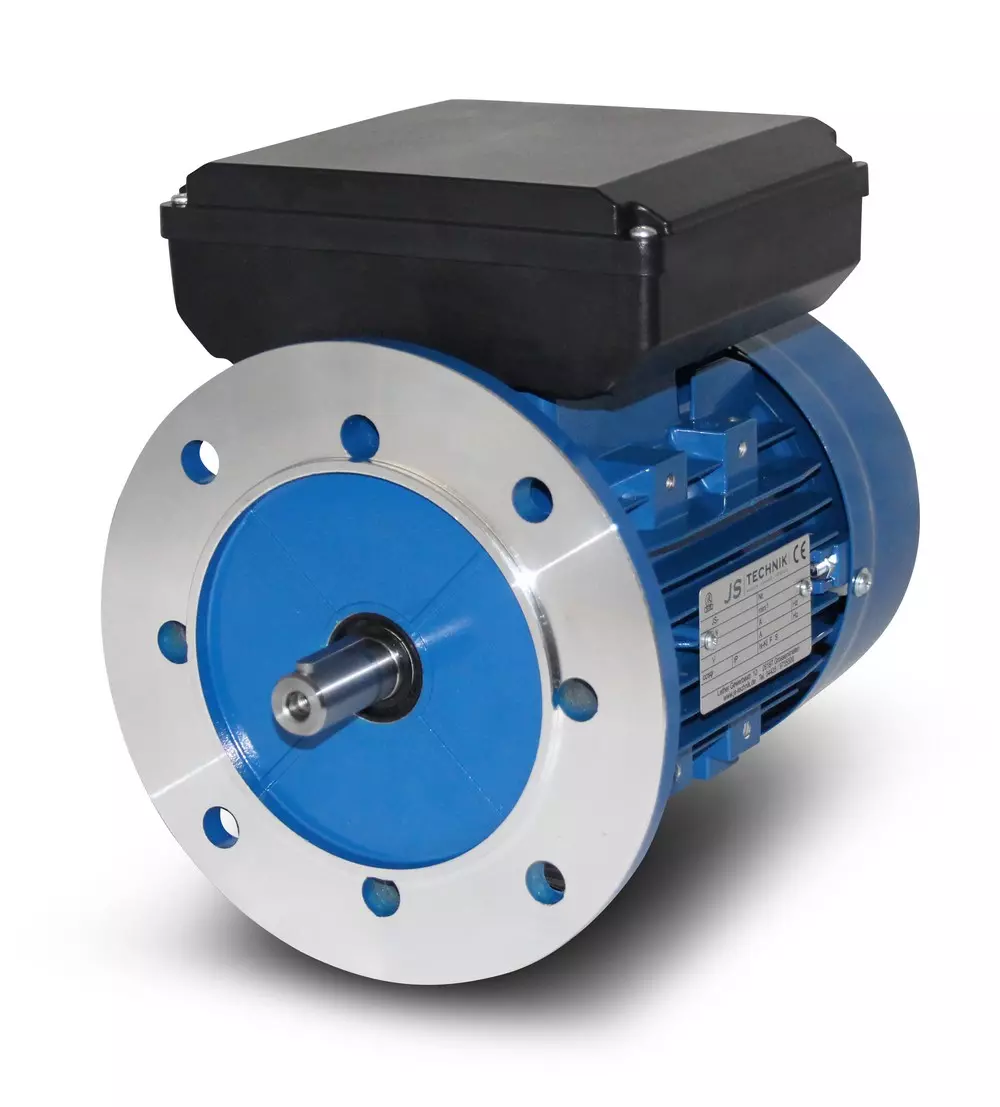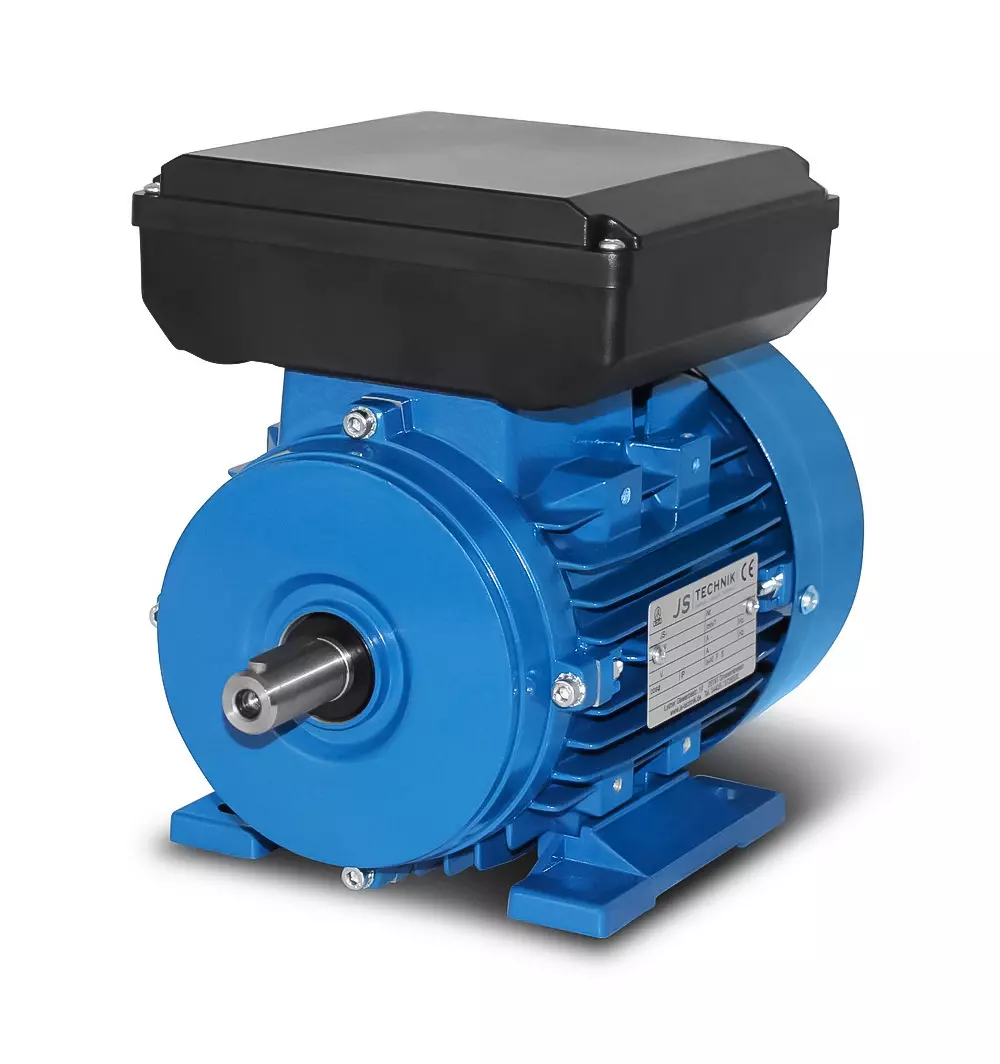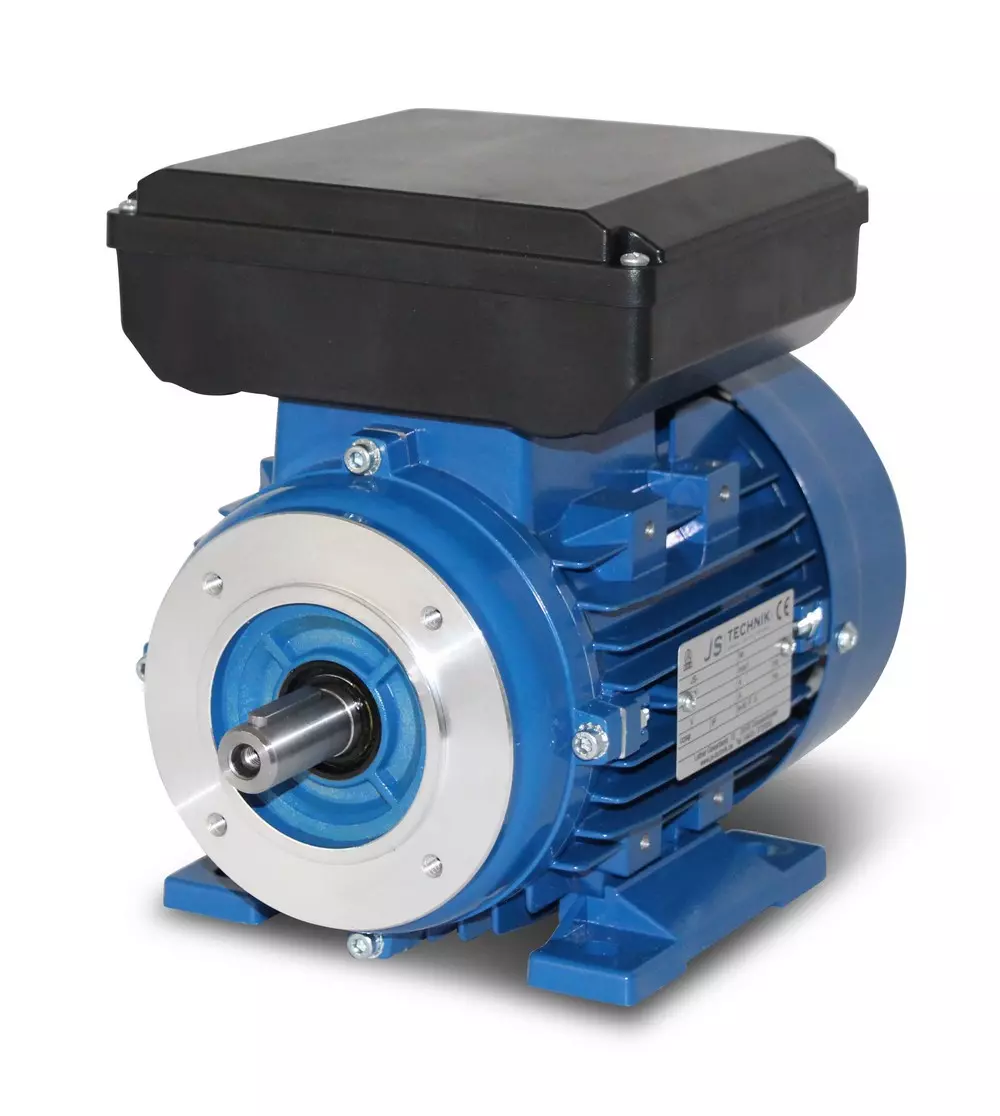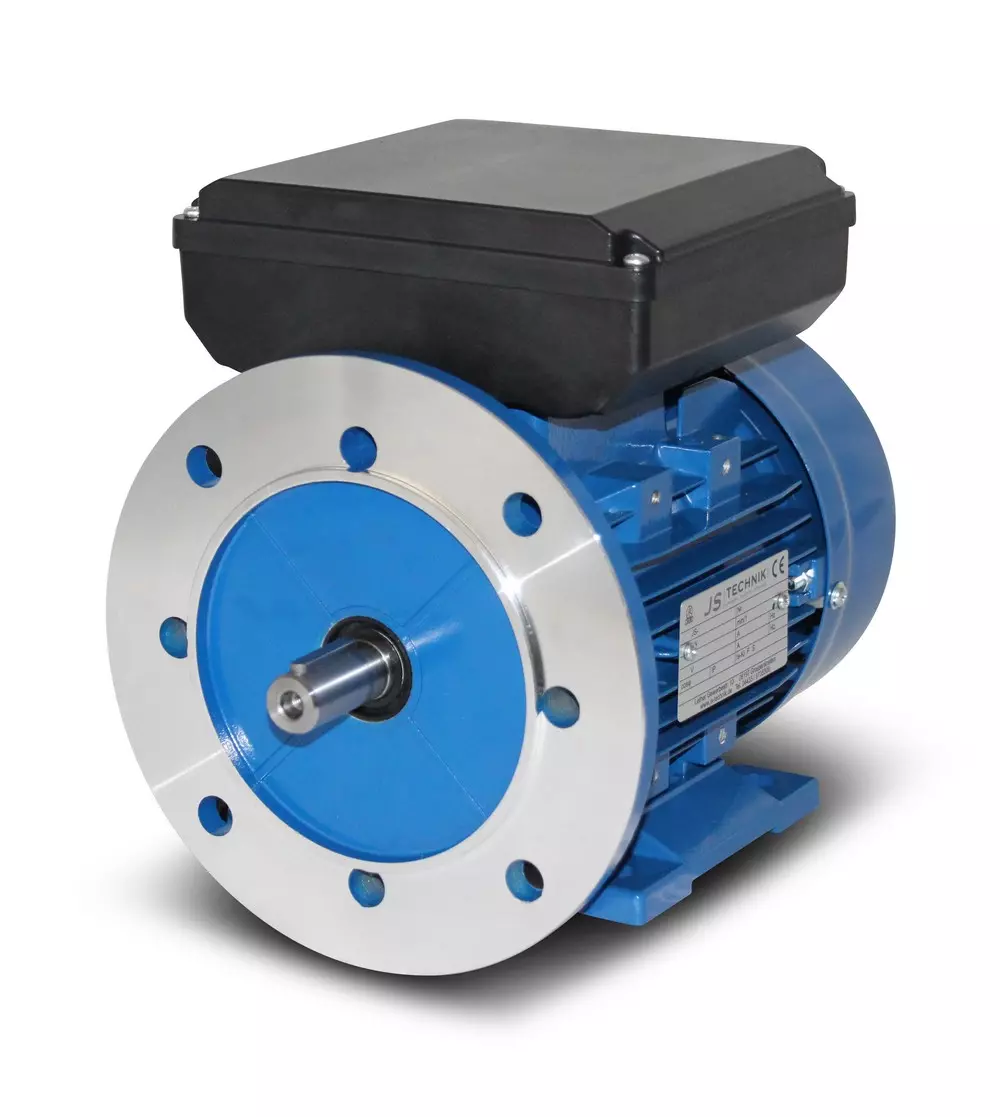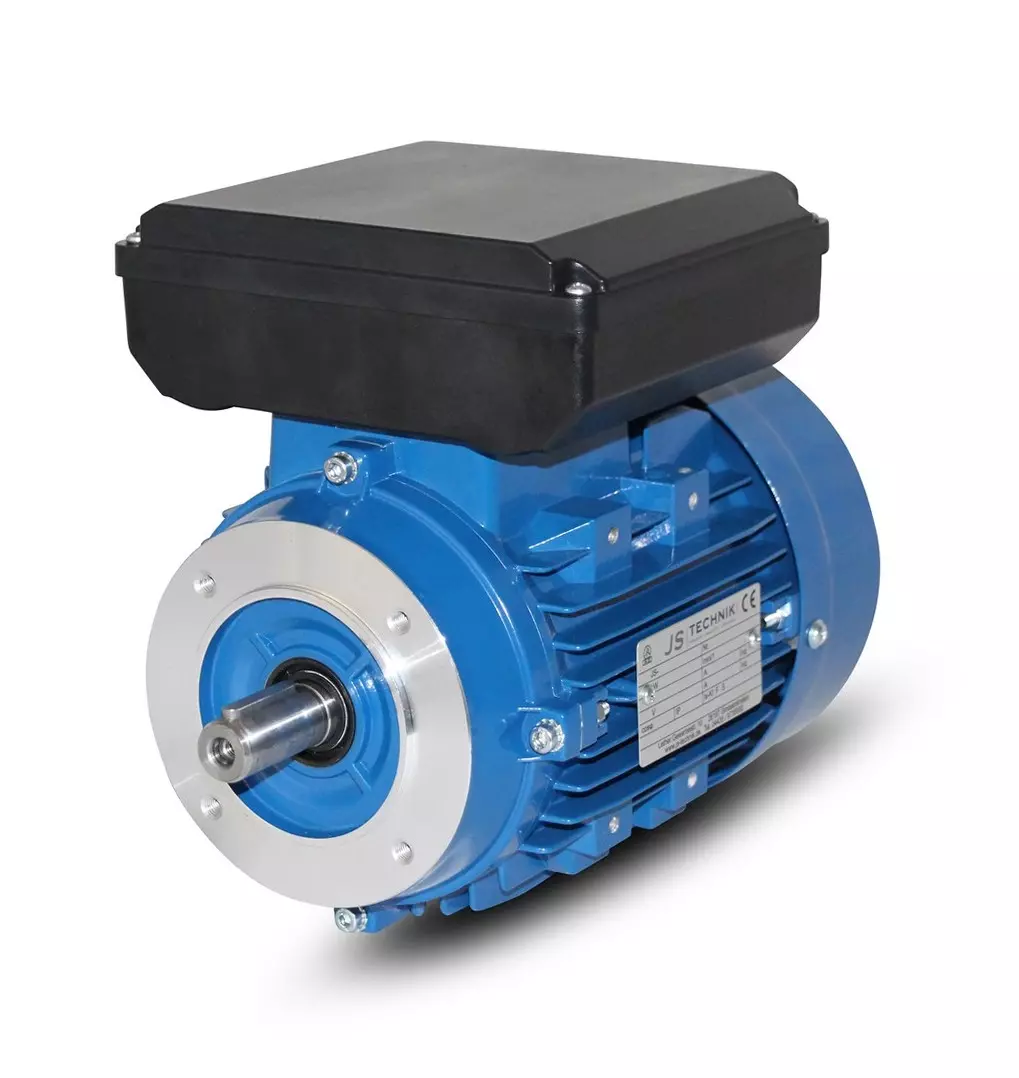Single-phase motor / AC motor 0.12kW - 3.7kW
JS-Technik GmbH specialises in extensive challenges in the field of professional drive technology with a focus on AC motors, three-phase motors, frequency inverters and geared motors.
The AC motor also as a special motor
In many cases, AC motors are also required as special motors with customised requirements. We are the ideal partner for you here, as our specialist staff combined with our extensive motor warehouse and in-house final assembly enable us to cover a wide range: special AC motors with reversing switches for left/right rotation, special shafts, special voltages, as single-phase motors in various protection classes or in combination with a geared motor.
Power ratings / speeds of 220 V / 230 V / 240 V motors
On this page you will find a selection of electric motors in the sizes 63, BG71, BG80, BG90, BG100 and BG112 with an output of 0.18kW, 0.25kW, 0.37kW, 0.55kW, 0.75kW, 1.1kW, 1.5kW, 2.2kW, 3.0kW, 3.7kW. Our single-phase motors are available in the following versions: 2-pole (3000 rpm), 4-pole (3000 rpm) and 6-pole (1000 rpm).
The capacitor motor
We offer our AC motors with operating capacitors and starting capacitors. The variant with two capacitors is designed for heavier starting. In principle, our AC motors can be operated in clockwise and anti-clockwise rotation, i.e. in both directions of rotation. If necessary, only the control must be changed. For AC motors, the voltage specification has been changed from 220V to 230V. For three-phase motors, the rated voltage has been extended from 380V to 400V.
AC motor in kW or PS
The conversion from kW to PS or HP is carried out with the factor 0.73549875. This means that 1 PS is 0.73549875 kW or 1 kW is 1.359621617 HP.
About the AC motor function
As the at least two phase-shifted voltages required to generate a rotating field are not available with single-phase alternating current, a so-called auxiliary phase must be generated. One of the two stator windings is supplied directly from the AC mains, while a capacitor is connected in series to supply the second winding, which is arranged at 90 degrees to this. This causes the phase shift of the voltage on the second winding. The rotating field generated in this way is sufficient to move the rotor. However, it is also load-dependent and leads to a low starting torque. For this reason, capacitor motors should start up to the rated operating speed with as little load as possible. The starting torque can be significantly improved if an additional starting capacitor of around 2-3 times the size is briefly connected in parallel with the existing capacitor for the duration of the start-up. The higher starting current requirement, which can be several times the operating current at nominal speed, must then be taken into account. Strictly speaking, the size of the capacitor can only be optimised for a single load case. With optimised capacitor dimensioning, around 65% of the mechanical power can be achieved in comparison to a roughly identical asynchronous motor with three-phase supply. High-quality capacitors are usually used for the phase-shifting or starting capacitor. Typical capacitance values are approx. 20µF per kW motor power. With heavy starting, the capacitance value can be up to approx. 50µF/kW.
SEO: AC motor 220V- 230V- 240V, single-phase motor / AC motor 0.12kW - 3.7kW

